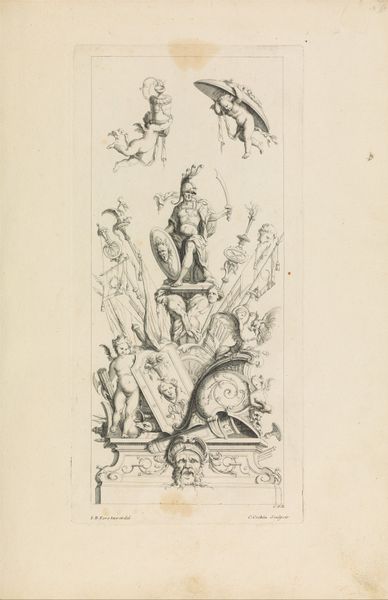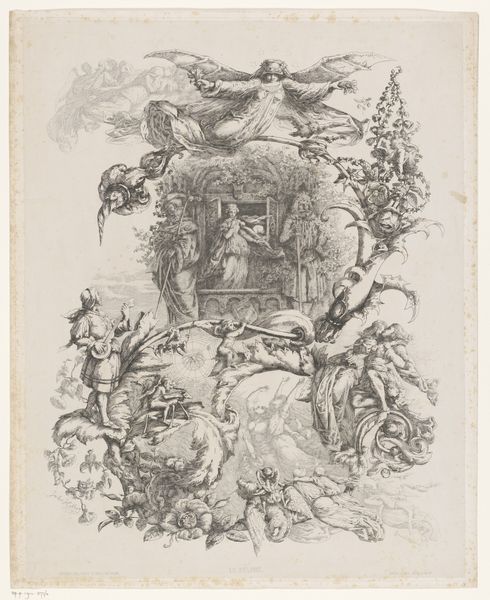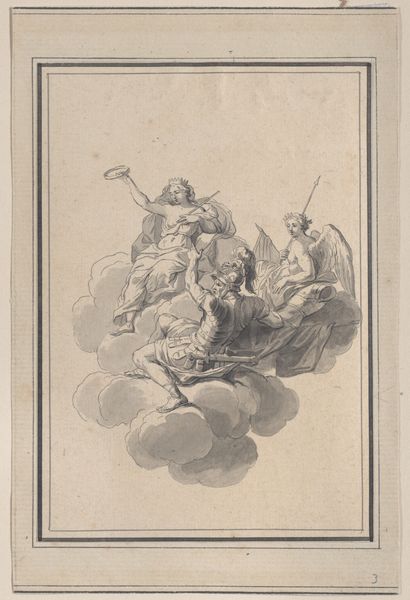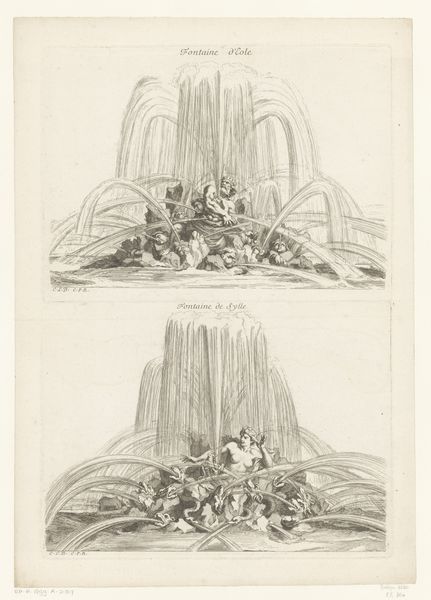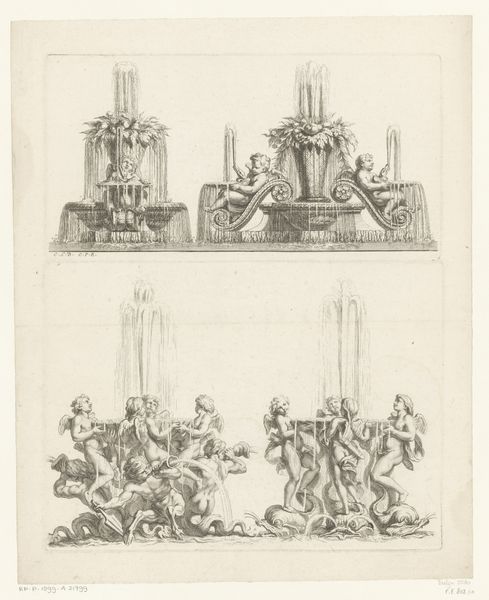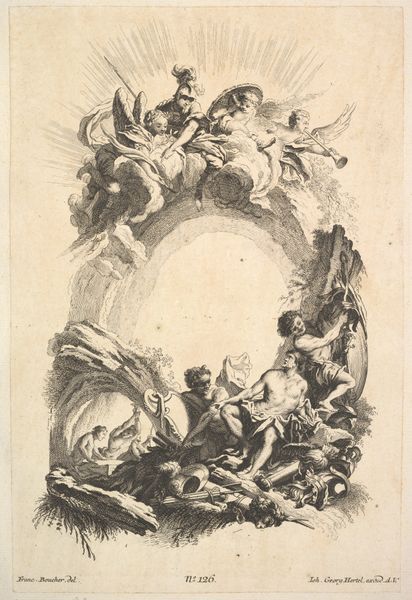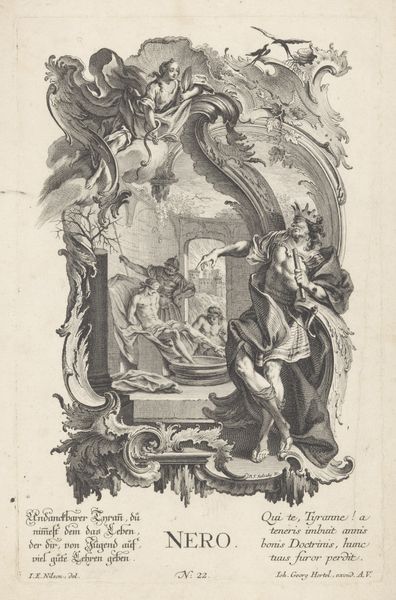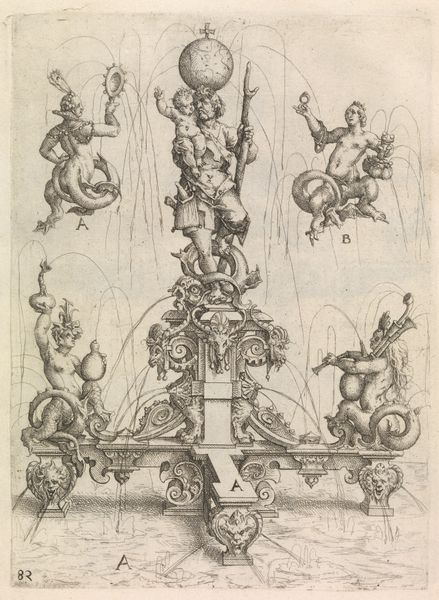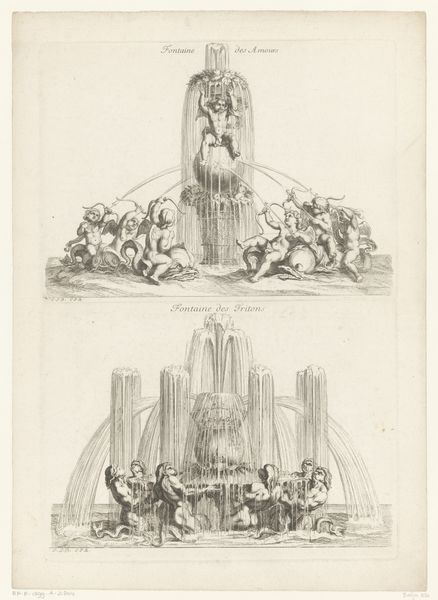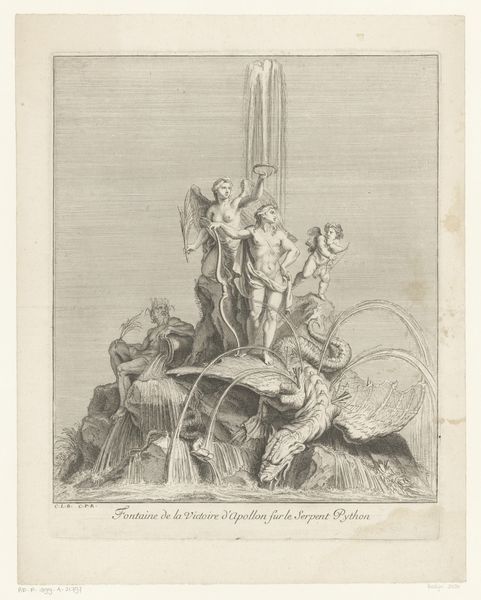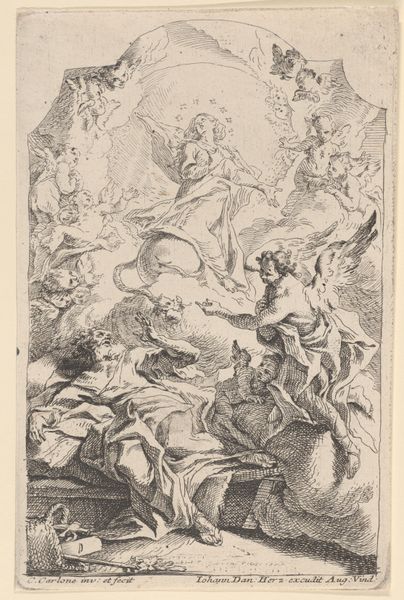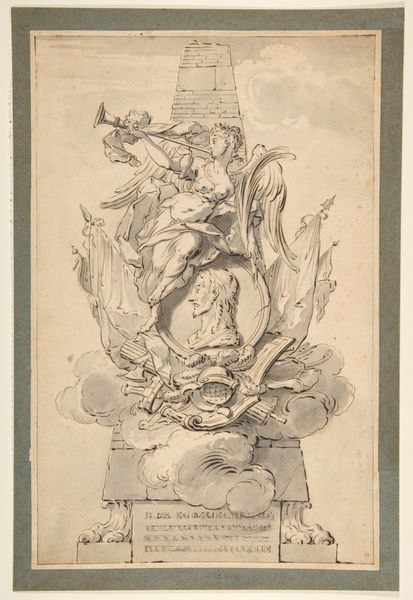
drawing, watercolor, ink, sculpture, engraving
#
drawing
#
baroque
#
pen sketch
#
landscape
#
figuration
#
watercolor
#
ink
#
sculpture
#
line
#
engraving
Dimensions: height 433 mm, width 288 mm
Copyright: Rijks Museum: Open Domain
Curator: Welcome. Before us is "Drie fonteinen met putti," or "Three Fountains with Putti," an ink, watercolor, and engraving created between 1672 and 1686 by Louis de Châtillon. What strikes you about it? Editor: There's an almost frantic energy despite the still, captured medium. All those swirling lines give the impression of constant movement, a vibrant celebration. What do these fountains symbolize, in a broader sense? Curator: Well, Châtillon likely crafted this not as an artistic expression per se, but rather as a precise record. Engravings, like this one, served as crucial tools for disseminating architectural and decorative designs, enabling widespread adoption and adaptation by other craftspeople. The line work itself becomes a kind of proto-blueprint. Editor: Fascinating. Water, of course, traditionally represents purification, life, renewal, and, paired with the putti, those cherubic figures so common in Baroque art, it emphasizes innocence and divine love. This image evokes paradise, a return to origins. I wonder if viewers at the time made those connections. Curator: Undoubtedly. Moreover, consider the implied patrons of such elaborate fountains. They weren’t merely aesthetic statements; they signified the patron’s wealth and power, channeled, quite literally, through water management. The Baroque era was a peak of resource-intensive displays of status. Editor: Absolutely. Each level cascades into the next. Notice how the putti in each fountain vary, with each distinct composition evoking playfulness but also a distinct hierarchy. Are these specific allegories reflected in these figures, perhaps alluding to virtues and elements? Curator: That's very likely. This print could have functioned as both a practical guide for artisans constructing these fountains and as an aspirational symbol for potential patrons. The layering of intention is palpable, isn't it? Editor: It truly is. It reminds me that even depictions of leisure and beauty can reveal profound insights into labor and class. Thank you, the symbology layered within something so "simple" as a drawing of a fountain offers great insight into this work. Curator: My pleasure. And likewise, considering it through a social and economic lens adds to an even richer context for appreciating the work and all the symbolism, bringing it together.
Comments
No comments
Be the first to comment and join the conversation on the ultimate creative platform.
